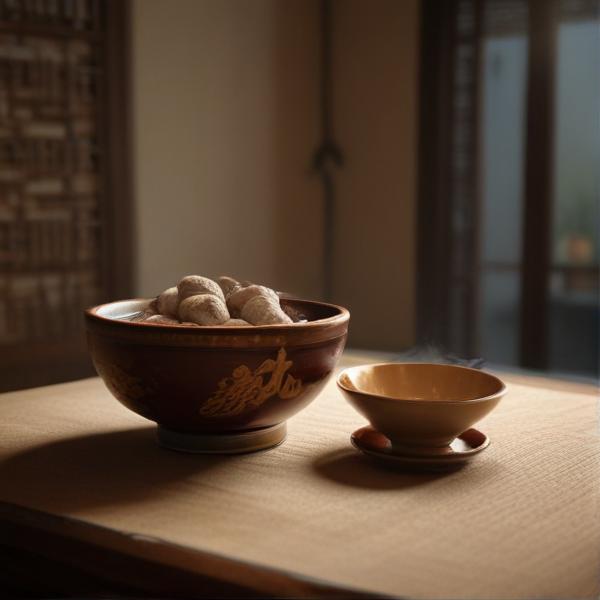基本信息 (Basic Information)
含义与用法 (Meanings & Usage)
中文核心释义 (Core Chinese Meaning): 盛放食物或液体的小圆口器皿,多为陶瓷制品。
英文核心释义 (Core English Meaning): A bowl; a round vessel, usually made of ceramic, used for holding food or liquid.
象形意义 / 为何这么写 (Pictographic Meaning / Writing Rationale)
文言文释义 (Classical Chinese Meaning)
与现代意义相近,古代亦用于指小型盛食器皿。Similar to modern meaning; in ancient texts, also referred to small vessels for holding food.
深入学习 (In-depth Study)
字源故事 (Origin Story)
字形演变 (Character Evolution)
常用词语和例句 (Common Words & Examples)
饭碗 (rice bowl; (figuratively) livelihood or job)
这份工作是我的饭碗。
Eng: This job is my livelihood.
碗筷 (bowls and chopsticks; tableware)
妈妈正在厨房洗碗筷。
Eng: Mom is washing the bowls and chopsticks in the kitchen.
相关成语 (Related Idioms)
相关成语信息待补充。Related idiom information pending.
多语言翻译 (核心释义) (Translations (Core Meaning))
- French: bol
- German: Schüssel
- Spanish: tazón/cuenco
- Italian: ciotola
- Portuguese: tigela
- Russian: чаша, миска
- Arabic: وعاء (زبديّة)
- Persian: کاسه
- Dutch: kom
- Polish: miska
- Vietnamese: bát
- Ukrainian: миска
视频学习资源 (Video Learning Resources)
通过以下链接在热门视频网站搜索 "碗" 的更多讲解:
Search for more explanations of "碗" on popular video sites:
- 在 Bilibili.com 搜索 "碗 字源 说文解字" (Search on Bilibili)
- 在 YouTube.com 搜索 "碗 character origin etymology" (Search on YouTube)
网络参考 (Web References for "碗") ()
网络搜索信息待获取。Web search information pending.
更多图片 (碗 More Images) ()
